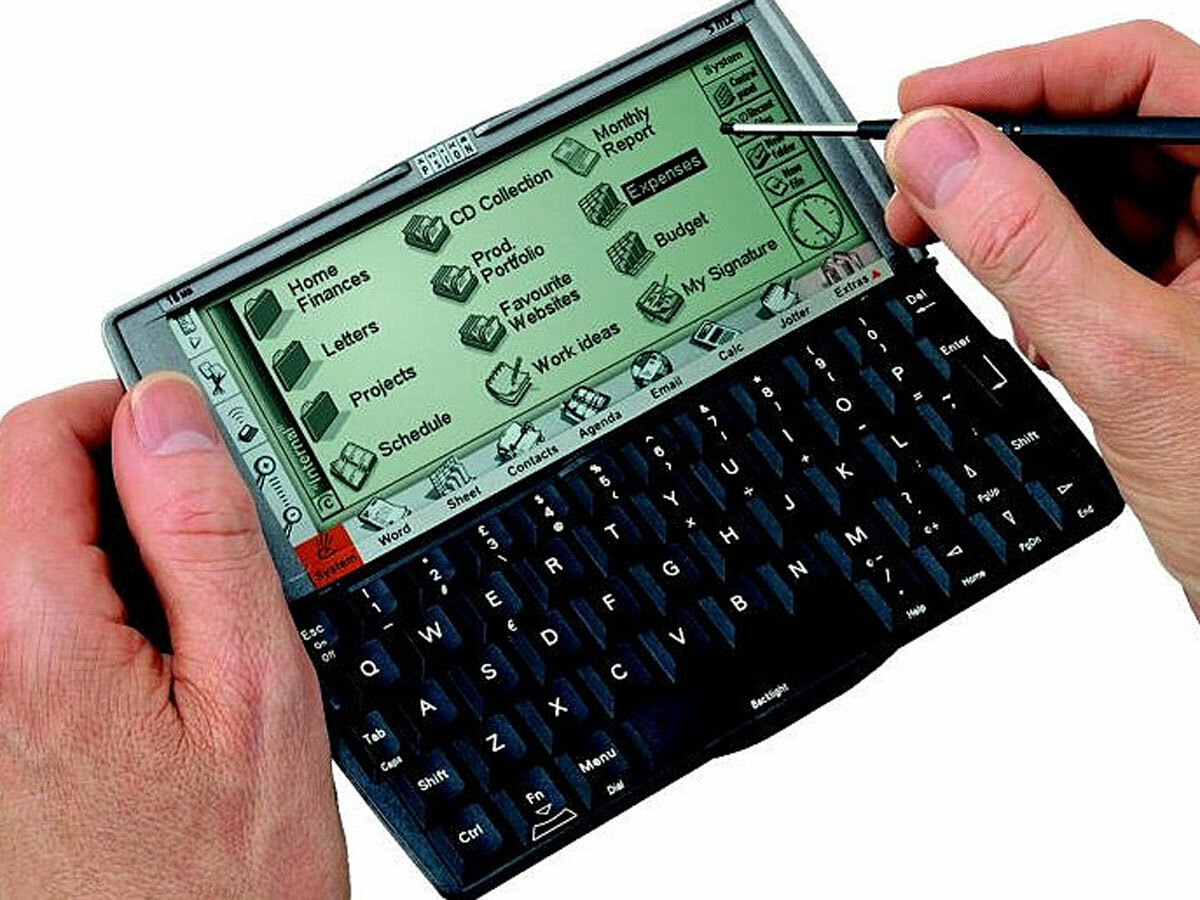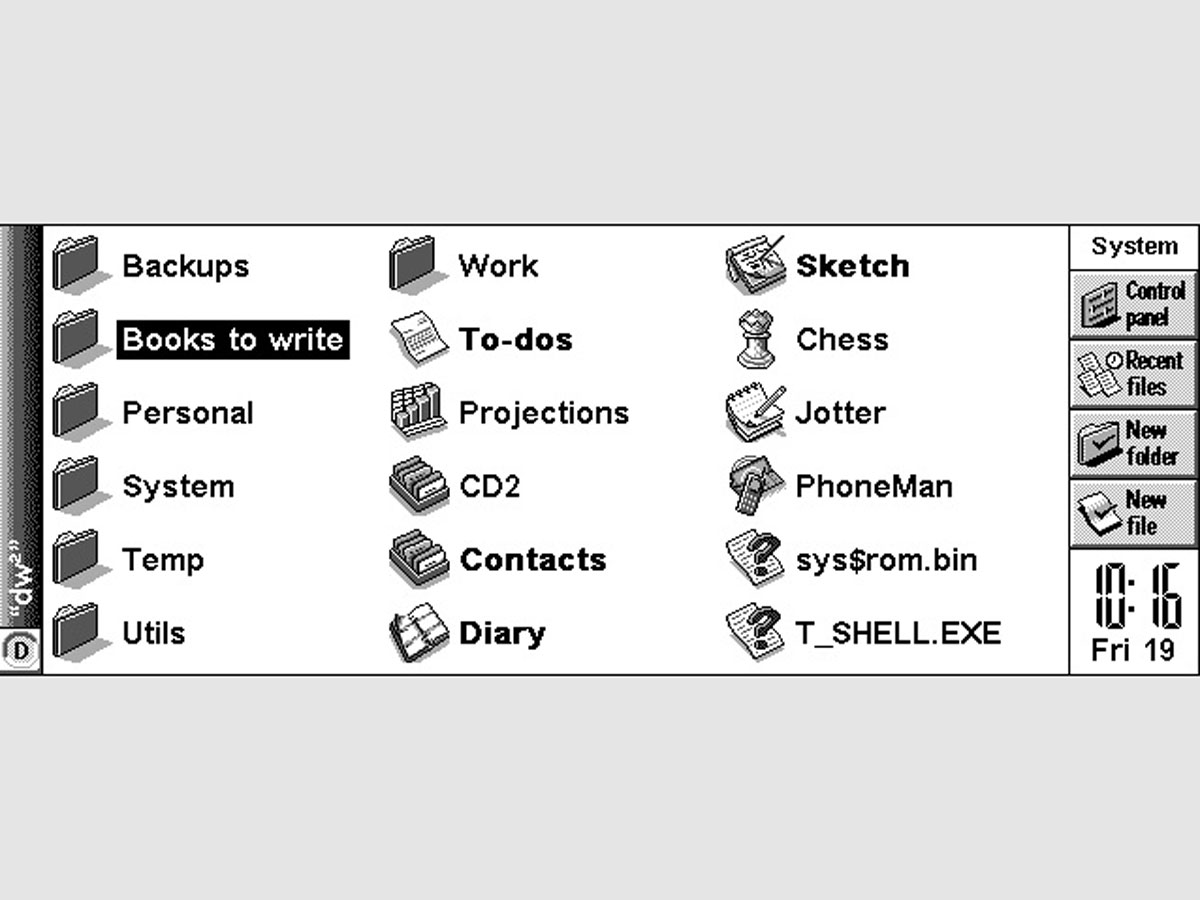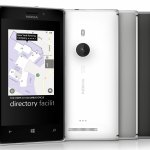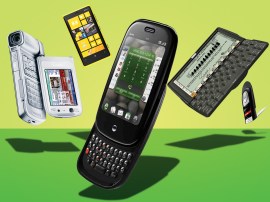Stuff Hall of Fame: Psion Series 5
Before smartphones organised our whole lives, there were PDAs – and the mighty Psion Series 5 was king among them
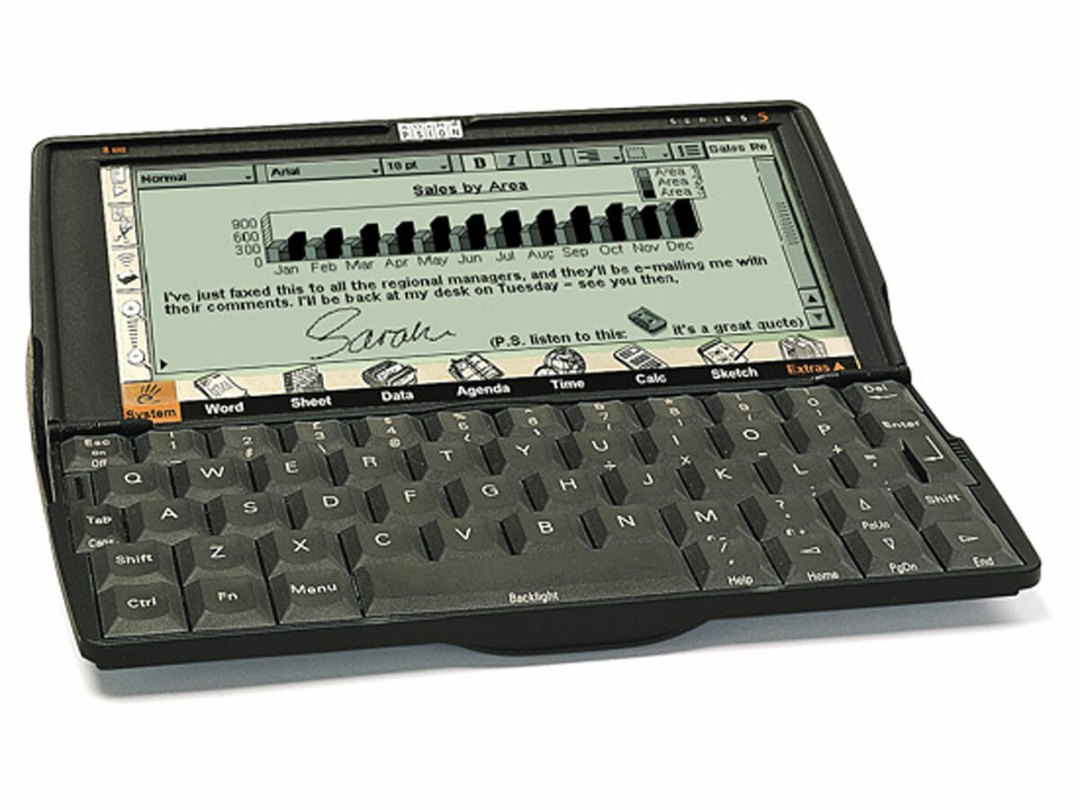
It was the beginning of the space year 1999 and, as a travelling hack, I was in need of an ultra mobile computer. Already delivering work by email and keeping in touch with editors online, I required a device that was portable enough to slip into a bag or a pocket.
The gadget I chose changed the way I worked forever. Cue swelling violins as I turn to the camera and say: it was a Psion Series 5.
What was the Psion Series 5?
Before smartphones and ultrabooks, the compact Psion Series 5 was the canine’s cojones in portable computing.
Clearly, we already had laptops at the end of the 90s, but few that weighed under 3.5 kilos (about 8 lbs) and they slurped up battery power. As for mobile phones, that’s all they were; phones.
That left the Personal Digital Assistant (PDA) or “electronic organiser”. Released in 1998, the Psion Series 5 was a PDA with bells and whistles as well as all the nuts and bolts. Pop in a couple of AAs and you were good to go for up to 25 hours of awesome computing.
A Computer in your Palm
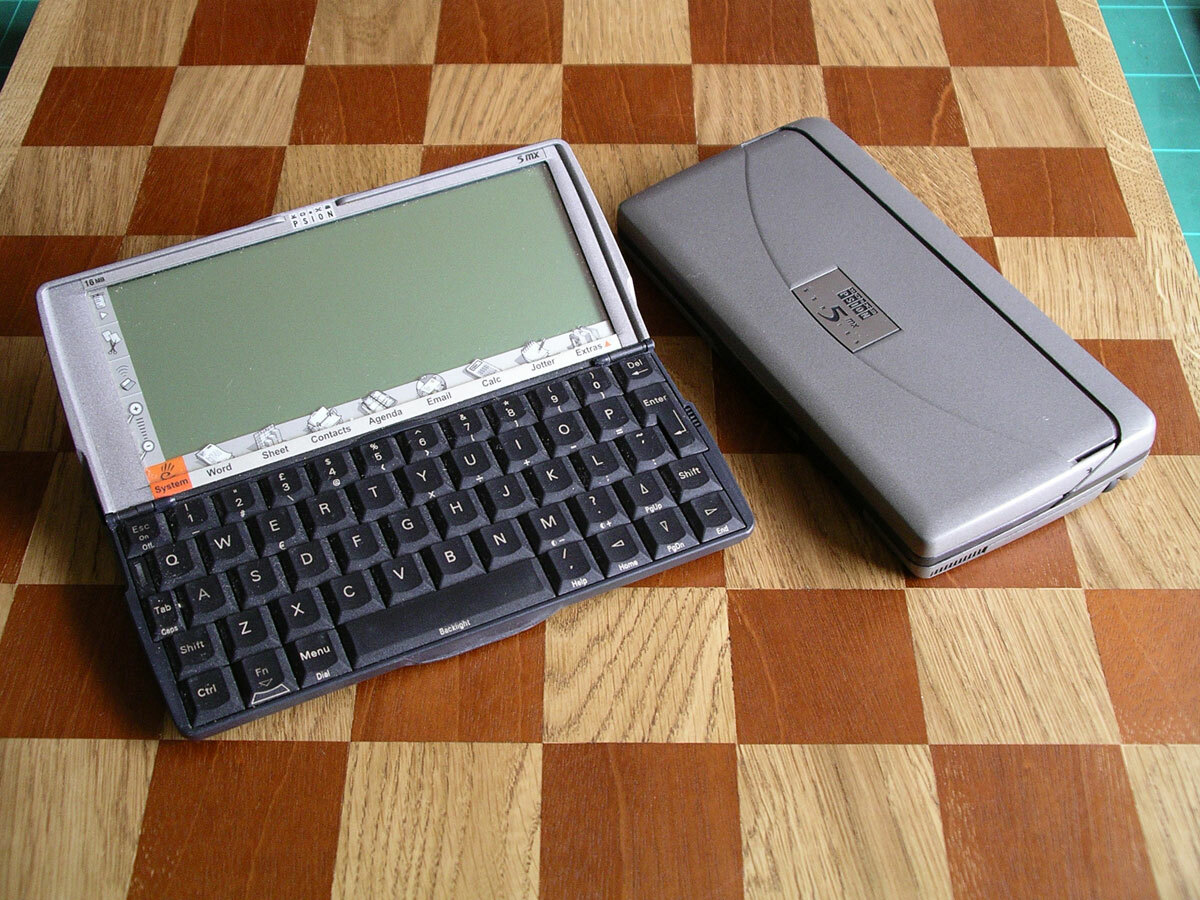
The Series 5 and its more powerful progeny the Series 5mx (launched in 1999) was compact, streamlined and ultra-portable. Measuring 170 by 90 millimetres, it weighed just a third of a kilo.
With its 640 x 240 LCD touchscreen in 16 glorious shades of grey, the 32bit Series 5 shipped with a stylus for selecting items on-screen.
The real marvel of the Series 5 was its clamshell design, which revealed a generously proportioned keyboard when opened. A little jiggery pokery enabled the device to retain keys close to the full size and depth of a traditional notebook keyboard, in a fraction of the space.
There is always competition and in 1998 the Series 5 did battle against the Palm III and its offspring. Handheld PDAs with similar battery life, the Palm III series boasted better connectivity with Windows and Mac. But the Series 5 had a faster CPU, packed in more RAM, had a much larger screen – and there was that keyboard. The Palm was a personal organiser; the Series 5 was a proper personal computer.
Things could only get better…
The Series 5 was already totes amazeballs, but it’s the 5mx that Psion fanatics still enthuse about.
“When we launched the Series 5mx, all of the little niggles had been addressed,” says Anthony Garvey, Head of PR for Psion from 1999 to 2003, “It was twice as fast with twice the memory and consumers upgraded in their thousands.”
Any PDA of the era was only as good as its software. Fortunately, alongside the standard address book and calendar functionality you’d expect, Series 5 devices came equipped with every application you needed to set up office away from home. They were genuine 32 bit apps running on EPOC, later renamed Symbian OS.
“The Series 5 word processor, spreadsheet and agenda applications were all minor miracles, in terms of rich functionality,” says David Wood, who was Software Architect at Psion when the Series 5 was launched.
In my case, I was able to hook my Series 5mx to an external Palmtop GPS receiver with Route Planner Millennium software. Made specially for the Series 5 by a company that would later rename itself TomTom, it was an early, enthusiast’s route to in-car navigation – at a fraction of the price.
And though there was no built-in Internet connectivity, the Series 5’s IrDA, infrared port enabled it to connect wirelessly to peripherals. With a DI28 infrared modem and Sony Ericsson T28 mobile phone, I was able to file copy and browse the web anywhere – direct from my Series 5 device. It was like living in the future. Assuming the future is a man tapping away at a tiny computer in a ’90s Premier Inn.
Series 5 is Alive
In the noughties, Psion would continue to innovate, spinning off Symbian to develop OS software for other devices. But the hardware side never repeated the rockstar success of the Series 5 and was eventually swallowed up by Motorola, while Symbian was absorbed into Nokia.
But the Series 5 lives on. David Wood uses his every day. “I have more than 20 years of data in my Series 5mx My fingers still know their way around the apps. I find it incredibly convenient.” You can pick up an mx on eBay for less than £50.
“We were at the peak of our powers,” Anthony Garvey says of the Series 5’s heyday. “Time magazine ran its lead story on us. There was a photo of David Potter our Chairman and a headline reading ‘the man who keeps Bill Gates awake at night.’
“We felt on top of the world,” says Garvey.
And for a while, they were.
